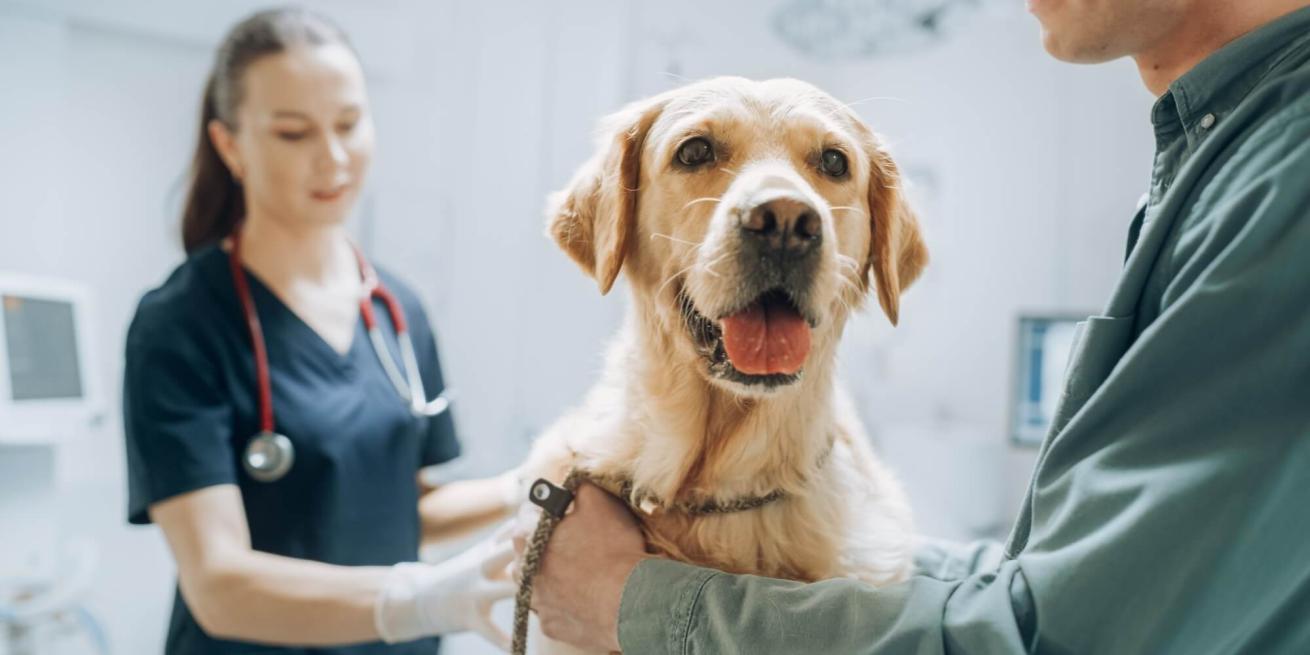
Whether we want to admit it or not, as veterinarians communicating with clients is as much our job as treating our patients is. Communication lies at the heart of every successful veterinarian-patient-owner relationship. Clear, empathetic, and effective communication not only helps in diagnosing and treating animals but also builds trust between pet owners and veterinarians. In this guide, we'll explore three crucial aspects of veterinary communication: non-verbal communication, active listening, and collaborative communication.
Speaking Volumes Without Words
Non-verbal communication plays a much bigger part in client communication than most of us realize. Unfortunately, many of us unintentionally send the wrong messages to our clients this way. Messages that could handicap us in our efforts to treat our patients. Non-verbal cues can convey as much, if not more, than spoken words. Non-verbal communication is the most important form of communication because 55-88% of our communication is through non-verbal communication. It doesn’t really matter what the exact percentage is, but what does matter is that we recognize and accept the fact that nonverbal communication is a significant component to communication, and that we can use this knowledge to help us communicate better.
For veterinarians, mastering non-verbal communication is essential for creating a comfortable and trusting environment. Here are some key points to consider:
1. Body Language
Eye contact is so important. The eyes can transfer a wealth of information without a single word. This is true for people and animals. The goal is periodic comfortable eye contact. Establishing and maintaining eye contact shows attentiveness and interest in the owner's concerns. It validates them and shows that you care.
Avoid crossing your arms or standing in a defensive posture. Instead, stand or sit in a way that is welcoming and approachable.
Subtly mirroring the body language of the owner can foster a sense of connection and rapport. Only do this if they are presenting themselves as open and relaxed, as you only ever want to present yourself as such. If their body language is expressing that they are on edge, posture yourself in a way that subconsciously tells them that they and their pet are safe with you.
2. Facial Expressions
One of the most remarkable qualities of facial gestures that they are universal. Regardless of culture or language, basic emotions like happiness, sadness, anger, surprise, fear, and disgust are all expressed similarly through our facial expressions. This helps overcome linguistic barriers and allows us to connect on a deeper level with everyone. Always greet clients with a smile and try to maintain that throughout consultations, whether they are wearing one themselves or not. A warm smile can instantly put an owner at ease and convey empathy and care.
Express concern or empathy when appropriate. Use facial expressions to show understanding and concern for the owner's worries. Sometimes, you have to be really intentional about this and focus on conveying concern or empathy with your facial expressions. For some veterinarians, this doesn’t come naturally.
3. Using Your Hands
When appropriate, a reassuring touch on the shoulder or a pat on the back can convey comfort and support. However, be mindful of personal boundaries, ensuring your touch is welcomed and not intrusive.
Keep your hands and arms open or rest them comfortably on your knees or at your side. This sends the message that you are trustworthy, confident, and approachable. Try not to cross or fold your arms as it sends a message that you are defensive, closed off, or withdrawn.
Don’t fidget with your hands. This means don’t be clicking your pen or wringing your hands, or (I’ve noticed veterinarians do this one a lot) over-pet the patient. It is OK and good to pet and show affection to the animal, but if you overdo it, it can be distracting and takes the focus off the conversation with the owner.
4. Posture
Maintain an open posture with your head up and shoulders back. This posture conveys a message of confidence, skill, and knowledge, helping the client feel more comfortable and willing to share their concerns and expectations.
Make it a priority to be at the same height as the client. This is best achieved when you are both sitting, which we talk about in The Greeting Process course in our Core Curriculum. By inviting the client to sit down and sitting down yourself, you are putting yourselves on the same level. This promotes equality and fosters trust and a more collaborative environment.
Building a Foundation of Trust with Active Listening
Active listening is a cornerstone of effective communication. It involves not only hearing the words being spoken but also understanding the underlying emotions and concerns. Here's how to hone this skill:
1. Give Your Full Attention
Minimize distractions and focus solely on the owner and their pet. Position yourself to directly face the owner to demonstrate your attentiveness as much as possible throughout consultations.
2. Use Verbal and Non-Verbal Cues
Nodding is a simple gesture that shows that you're engaged and processing the information being shared. This can be accompanied by phrases like "I understand," or "Tell me more," to prompt the owner to share more details.
3. Reflective Responses
Summarize what you've heard a client say to confirm your understanding and show that you're actively listening. Acknowledge the owner's emotions and concerns as they arise, demonstrating that you truly care.
Collaborative Planning
In veterinary practice, collaboration between veterinarians and pet owners is essential for achieving optimal health outcomes for pets. Here's a starting point for fostering effective collaboration:
1. Set Clear Expectations
Take time to explain processes in a way that a pet owner can understand. Ensure the owner understands what to expect during the examination, diagnosis, and treatment. Make sure you also take time to discuss potential outcomes with clients. Be transparent about the possible results and what they may mean for the pet's health.
2. Involve the Owner Wherever Possible
Encourage the owner to share any observations or concerns they may have about their pet's behavior or symptoms, and to ask questions (but wait to address these until after you’ve conducted the physical exam).
Clearly communicate the reasoning behind your recommendations and treatment plans. This is where our diagrams can be extremely helpful, as they provide clear visual breakdowns of the workup process.
3. Follow-Up and Feedback
Provide very clear post-visit instructions, ensuring that the owner understands any necessary follow-up care or medication administration.
Additionally, encourage owners to share their thoughts and concerns, and use this feedback to improve your communication in the future.
Effective Communication is the Bedrock of Exceptional Veterinary Care
Mastering these communication skills is a continual process (we have training for that!) that can greatly enhance your effectiveness as a veterinarian. By integrating non-verbal communication, active listening, and collaborative communication into your practice, you'll not only provide better care for your animal patients but also build stronger, more trusting relationships with their owners.

Dr. Brett Bingham, DVM
In the early years of my veterinary practice, I learned the hard way that unintended bad communication can derail your best intentions. Through trial and error, I developed a communication course for myself and my veterinary team to develop confidence and success in the exam room. You can learn these powerful principles too! When great communication practices are put in place AND practiced regularly, you will see consistent growth, happier clients, and better job satisfaction.
Allow me to teach you the tools I’ve learned so that your practice can grow too.
